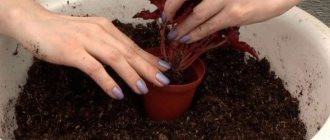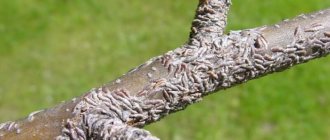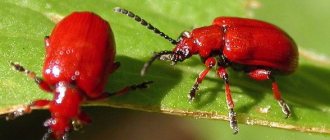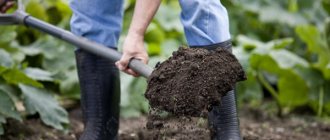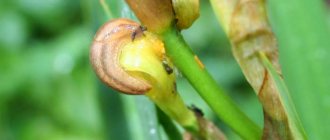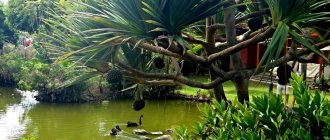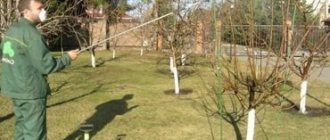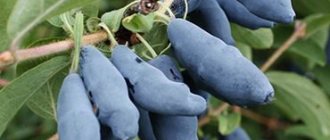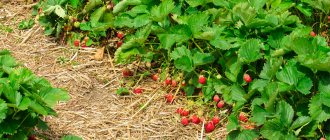Peach diseases and their treatment
When talking about peach tree diseases, we usually talk about fungal infections. To eliminate the pathogen, that is, the fungus, preparations based on fungicides are used.
Leaf curl
The most dangerous and widespread fungus that affects peach trees is taphrina. In spring, fungal spores penetrate the buds and shoots of the plant. Blisters of a pale green hue can be found on the leaves, and if left untreated, they change their color to purple and acquire a layer of plaque. Blackening foliage dries out, becomes brittle and falls off.
Young plants, whose age has not yet crossed the border of two years, are mainly susceptible to curling. The disease also affects the branches of the tree; they turn yellow, become deformed and dry out. The inflorescences stop growing, not allowing the fruits to develop.
At the first symptoms of curl, immediately cut out all diseased shoots and burn them. Then treat the affected areas with 1% copper sulfate. In autumn, as a preventative measure, all fallen leaves are collected and burned, and branches are sanitary pruned. Before inflorescences form, the plant is treated with a fungicidal agent.
Moniliosis
Stone fruit crops (peaches are no exception) have weak immunity to diseases such as moniliosis. The fungal disease is especially active in the spring, when the inflorescences on the branches are just beginning to form. The fungus is spread by bees while collecting nectar.
A diseased peach tree visually looks lethargic and drooping, as if it had been scorched by a strong fire. That is why this disease is sometimes called monilial burn. When moniliosis is detected, all diseased branches are cut off and burned. As in the case of curl, the affected areas are treated with a fungicidal preparation.
In hot summers, monilial burn can also manifest itself as fruit rot, causing a detrimental effect on the fruit. It is recommended to pick and burn rotten peaches to prevent the spread of infectious disease.
Clusterosporiasis
The ideal environment for the spread of clasterosporiasis is a temperature of 20°C. Therefore, gardeners need to be especially vigilant in the spring and autumn. At a certain temperature and humidity level, the fungus infects the entire plant in just 19-20 hours. After 5-6 days, you can discover that the tree has become ill with clasterosporiasis.
The main symptoms of this fungal disease are burgundy spots on the leaves. If left untreated, they double in size. The fungus can also destroy the fruits, causing the process of rotting. Treatment consists of sanitary pruning of the branches and treatment with any available fungicidal agent.
Powdery mildew
The marsupial fungus can also cause another disease called powdery mildew. It manifests itself as damage to foliage, shoots and fruits. Young trees are especially at risk. Symptoms appear at the beginning of summer and continue to develop until the middle of the summer season.
Subsequently, this leads to the fact that a thin layer of plaque appears on unripe peaches. Affected fruits stop developing and begin to rot.
To prevent the development of powdery mildew, it is necessary to remove all diseased peaches and branches with leaves. Then carry out treatment with a 1% preparation based on colloidal sulfur.
Cytosporosis
This fungal disease appears only in the absence of proper care. In an abandoned garden, the fungus spreads quite quickly and affects all stone fruit plants.
The risk of occurrence in a healthy and well-groomed tree is minimal. The development of this fungal disease occurs in the spring and continues until late autumn, damaging most of the branches.
The development of the fungus also occurs in the bark of the tree. The affected tree bark, unlike branches, is much more difficult to remove, but it is extremely necessary to do so. Otherwise, the plant will most likely die by the beginning of the winter season. In order to save the peach tree from the painful course of cytosporosis, damaged branches are removed and treated with 3% copper sulfate.
It is important not to overdo it with the recommended proportions of the fungicide used. For example, copper sulfate is a fairly strong chemical that can weaken the plant’s immunity.
Pests of peach trees
To identify and combat peach pests, it is important to study photos of their species and signs of occurrence. In addition to aphids, which attack most plants in the garden, there are other insects that cause damage to the crop.
Peach moth
This pest of peach is also called carp fruit. It belongs to the Butterfly order and the Garden Moth family. The insect is found in Asia, North America and some Russian regions:
- Khabarovsk region;
- Jewish Autonomous Region;
- Primorsky Krai;
- Amur region.
The peach codling moth has bisexual reproduction. The average body length of an adult larva is 15 mm, a female butterfly is 11 mm, and the male is shorter. The imago is gray in color, has a large dark spot in the center of the front pair of wings and a blue shiny dot inside.
Peach moths lay eggs at temperatures ranging from 15 °C. The fertility of the second generation is approximately 65% higher. Up to four generations are possible per year.
The caterpillars of the peach codling moth immediately bite into the fruits, making passages there and filling them with excrement. One fruit can have several pests.
Comment! Peaches affected by the codling moth are completely unsuitable. Without pest control, the amount of damage reaches 90%.
The transformation of the peach moth from an egg into a caterpillar takes from two months to a year.
Peach bark beetle
For this pest, peach wood simultaneously serves as a home, food, and breeding ground. Signs of a beetle:
- round holes on the trunk from which wood shavings or powder fall out;
- slightly noticeable crackling sounds when the beetle feeds;
- gum deposition – a peach’s protective reaction to a pest;
- the appearance of woodpeckers, for whom beetles are food.
There are hundreds of species of bark beetles. The pest spends almost its entire life inside the tree. It pierces the entrance channels to the most juicy tissues, where it lays eggs.
The size of the bark beetle in Europe rarely exceeds 8 mm
Scale insect on peach
There are about 2.5 thousand species in the scale family. These hemiptera insects are pests of peach trunks. They feed on plant sap, sucking it out of the bark. They overwinter in it and lay eggs. Tree damage is manifested by the following symptoms:
- curling and withering of shoots;
- looseness and porosity of the bark;
- the appearance of red dots on peaches;
- cessation of fruiting.
A distinctive feature of the pest, which gave it its name, is the presence of a 3 mm long shield. Insects store eggs inside.
Reproduction of scale insect larvae begins in May; without timely intervention, the pest can spread throughout the garden
Comment! One of the methods of combating scale insects is manual collection from the tree and destruction. To prevent and facilitate work, it is important to regularly thin out the crown.
Weevils
These beetles infect different parts of the peach, feeding on stamens and pistils, petals, and young green foliage. Large individuals are capable of piercing buds, inflorescences, and buds. The pest often attacks fruits, gnawing holes in them and laying eggs.
Because of their elongated rostrum, weevils are popularly called elephant weevils. Adults can reach 1-30 mm in length. The larvae often develop in grass stems and roots, feeding on litter.
Weevils are dangerous because they are carriers of many fungal diseases.
Fruit moth
The fruit moth is a butterfly with a gray body 1 cm long. It is predominantly nocturnal. The pest dies after a few days, maximum two weeks, but manages to lay eggs.
The fruit moth feeds on buds and young shoots, eating their cores. This leads to withering and death of damaged parts of the plant and shedding of leaves. Each individual is capable of destroying up to five shoots. In adulthood, the caterpillars move into the soil near the trunk or dried foliage.
Shoots affected by fruit moths must be pruned and burned, be sure to remove root shoots, and loosen the soil around the trunk
Ticks
The peach may suffer from leaf mites or spider mites. The length of the pest's body rarely exceeds 2 mm. It feeds on plant juices, which disrupts water balance, chlorophyll synthesis and photosynthesis. This has a bad effect on the abundance of fruiting, taste and external qualities of peaches.
Leaf mite infestation can be identified by small yellowish spots on the surface of the leaves. Their edges bend towards the middle.
Of the spider mites, peach is most often attacked by the brown fruit pest. In addition to fruit spoilage, it brings other troubles:
- destruction of the tree trunk;
- massive fall of leaves;
- eating buds and inflorescences;
- oppression of growth and development of culture.
Spider mites can be identified by their thin webs - it is this feature that gives the pest its name
Pests on peach and their control
Like any other stone fruit plant, peaches are sometimes attacked by harmful insects. They can not only cause serious harm, but also cause the death of the tree. In the fight against insect pests, as well as against fungal infections, a fungicide-based product can help.
To kill insects, insecticidal agents are used that have a damaging effect on the insect itself, while causing minimal damage to the tree. The fungicide is used as a preventive measure to prevent the development of new threats from pests.
Eastern moth
The eastern codling moth is a kind of butterfly. Its wing span can be more than 2 cm. The main danger of this insect pest is the laying of a significant number of eggs on young shoots or many ovaries. Towards the end of summer, the codling moth switches to the peaches themselves, then migrates to the bark or fallen leaves for the winter.
Next season, the peach tree will be covered in codling moths, which have grown and are beginning to eat foliage, young inflorescences, and bark. You can protect the plant from the harmful effects of this insect only by collecting it manually and promptly removing the infected areas.
Special traps made of fabric strips and a non-drying adhesive solution effectively help in the fight against codling moths. It prevents the insect from climbing onto the tree bark. Painting the trunk of a plant with lime mortar works on the same principle.
Aphids on peach
Aphids not only significantly reduce peach immunity, but also contribute to the occurrence of diseases such as sooty fungus. It is not difficult to find out about an aphid attack; you just need to look under a couple of leaves of a peach tree - the insect accumulates in the very thick of the foliage. Curly foliage and crooked shoots indicate that aphids have been living on the plant for a long time.
Before fruiting begins, the insect pest can be gotten rid of with any insecticidal agent. However, if young fruits have already appeared on the tree, it is permissible to fight aphids with only one method - the insect does not tolerate sharp alkaline aromas at all. Therefore, tinctures made from garlic cloves, laundry soap, and onion peels are sprayed onto the leaves.
Fruit striped moth
Externally, the fruit moth may resemble a small butterfly. However, its ability to destroy shoots in a short period of time makes it one of the most dangerous pests. Despite their small size, fruit striped moths can cause enormous harm. Its caterpillars can bite into a bud or young shoot, thereby causing their death.
An effective method of getting rid of fruit moths on peach is to treat the tree with insecticidal agents. The most famous names are: “Metaphor” and “Chlorophos”. Having noticed an area affected by striped moths, it must be immediately removed and burned. Then the fresh cut must be processed using garden varnish.
Ticks
The mite that harms the peach tree does not belong to the insect family, as it is a representative of arthropods. Therefore, insecticidal preparations that can kill pests are not suitable in this case. It is impossible to find out about the appearance of mites on a plant, since their tiny size does not allow a person to detect the problem. However, changes occurring in the plant can be noted immediately.
Tree buds affected by mites become deformed and begin to grow sideways rather than upwards. You can also notice their significant increase in size. Arthropods are capable of forming yellow spots on leaves, which cause them to fall off.
If left untreated, mites build a web-like nest in which they live and reproduce. An effective drug in the fight against arthropod mites is colloidal sulfur. The treatment is carried out even before the peach tree begins to bloom.
Weevils
Bugs of bluish and greenish shades are pests called weevils. They feed on the leaves of all fruit trees, thereby causing irreparable damage to the buds, inflorescences and fruits of the peach tree. If insect reproduction, which often occurs on leaves, is not prevented in time, then by mid-summer most of them will be damaged.
Insect control can only be done manually. It will take a lot of time before you can collect all the weevils. As a preventative measure, special means are used, such as Inta-Vir and Decis.
Leaf curl
It occurs quite often and is perceived by gardeners as a consequence of lack of moisture. As a result, the garden begins to be watered with redoubled diligence. Needless to say, nothing good comes of this, because fungal diseases thrive in high humidity. A disease of peach leaves called leaf curl is a fungal infection of the green mass.
This variety is greedy for young shoots, tender leaves and ovaries. The pathogen affects the most vulnerable parts and prevents the normal development of the peach. The first symptoms can be noticed already at the time of flowering. The leaves turn yellow and curl, and later the fruit suffers. Fungal colonies form a film that interferes with the growth of fruits and negatively affects their taste. Therefore, experts recommend treating peach plants against diseases in the fall, and then repeating the procedures before flowering.
If time is lost, you have to look for other ways to fight for the upcoming season. As soon as infected tissues begin to turn yellow, they are cut off and destroyed. For preventive purposes, the use of techniques that promote plant rejuvenation is also effective. Peach diseases and their treatment continue to be studied, the drugs used are improved, and some are replaced by new ones. Therefore, in the new season in the store you can find not only drugs from well-known brands, but also something new. In this case, you can consult the seller and make the right choice.
Prevention of peach diseases and pest damage
There are a number of recommendations that will help any gardener, both novice and experienced, in maintaining a peach tree. To prevent possible plant diseases, as well as the appearance of pests on it, you need to use simple preventative measures:
- In early autumn, when leaves begin to fall from the tree crowns, collect it and then burn it. Also, dried weeds, removed excess shoots and dry branches will go into the fire. After burning, collect the remaining ash, it will become an excellent fertilizer for the peach tree.
- During late autumn, dig deep into the soil near the trunk of the peach tree. This will provide an opportunity to reach pests that live in the ground during winter. If they hit the surface they will die from frost, this will provide greater safety for the peach tree in the spring.
- Treat the tree trunk with lime whitewash. This can be done either in late autumn or very early spring.
- Before winter, perform an eradication treatment of the peach tree crown. To do this, use a 3% solution of copper sulfate.
- At the beginning of spring, install a special trap on the peach tree. It is called a catching belt, which will help in catching garden parasites. The belt can be made from many available materials - for example, paper, cardboard, polyethylene film, any old bag or rubber.
- In the spring, treat the crown of the peach tree with fungicidal and insecticidal solutions to prevent fungal diseases.
- Use toxic chemicals to control pests only after careful preparation.
- A good solution would be to use a prepared mixture of drugs such as Decis and Horus, but be sure to adhere to the dosage indicated in the instructions. The preparations will provide the peach tree with reliable protection from garden pests and fungal diseases at the same time. Apply one treatment before flowering and two after flowering has passed. In this case, maintain an interval of at least 10-15 days.
Fruit rot
This is one of the forms of moniliosis, since the disease is provoked by the same pathogen. In this case, the plant is affected directly through damage to the fruits caused by the codling moth or hail. The appearance of brown or brown spots is characteristic. Gradually they spread throughout the entire peel. By that time, circular clusters of gray dots have formed on it. These are fungal spores. You also need to keep in mind the fact that they have the ability to scatter throughout the area. The sooner action is taken, the fewer infected fruit trees there will be around.
To avoid this situation, you need to treat peach diseases in a timely manner. The scheme is usually as follows. In May, they practice spraying the buds with “Topsin M” (from powdery mildew, scab, moniliosis). After flowering, use “Delan” or “Horus” (alternating). As a result, your garden is protected from fungal diseases, and delicious fruits ripen on the branches and are waiting in the wings to get to the table.
How to help a peach recover after illness
During various diseases, the peach's immunity decreases; due to illnesses, the tree loses strength, as a result of which the risk of not surviving in the winter increases. To recover, the tree needs to be provided with proper nutrition and choose fertilizers with the right combination of minerals - there is a wide range of insecticides, fungicides, and acaricides.
To protect the peach tree from the cold, you need to provide proper thermal insulation. After suffering an illness, it is important to take care of the plant’s proper recovery. To improve the immune properties of peach and the development of the plant, you can use preparations that contain phytoactive properties, stimulate development and growth, as well as various immunomodulators.
If we exclude the high susceptibility of peach trees to various fungal diseases and possible damage to the fruit by pests, there will be no complications with proper cultivation. With a careful approach to disease prevention and a quick response from the gardener to the first signs of diseases and pests, the peach tree will grow and bear fruit well.
0
0
Copy link
Causes of diseases
For proper treatment of peach tree diseases and their prevention, it is important to know the possible causes of problems. They are most often called:
- mechanical damage – entry gate for pathogens and pests;
- thermal injuries - frost in winter, sunburn in early spring, summer;
- penetration of viruses, bacteria, fungi through cracks and other damage, transfer by precipitation, wind, insects;
- excess or deficiency of moisture;
- lack of fertilizer or overfeeding the tree.
An important factor for peach health is the correct planting location.
Why does the peach tree “cry”
Very often, sticky formations resembling resin can be seen on the trunk of a stone fruit tree. This new formation is called gum or the popular name for glue, which is formed when the bark of a tree cracks.
If gum bleeding appears, this is a signal that the tree is not properly cared for, there is excess moisture, or certain defects are causing it. You can get rid of this problem in the following way:
- The glue is excised with a sharp knife, and then the cleaned area is treated with copper or iron sulfate;
- then, when the tree wounds have dried, apply a thin layer of garden varnish to them;
- Next, all the places from which the glue was removed are smeared with sorrel juice.
In general, it is worth emphasizing that such a defect can also be provoked by a large amount of nitrogen fertilizers applied to the soil. In any case, if a problem arises, you should immediately begin to treat the tree, otherwise it may die in the future.
